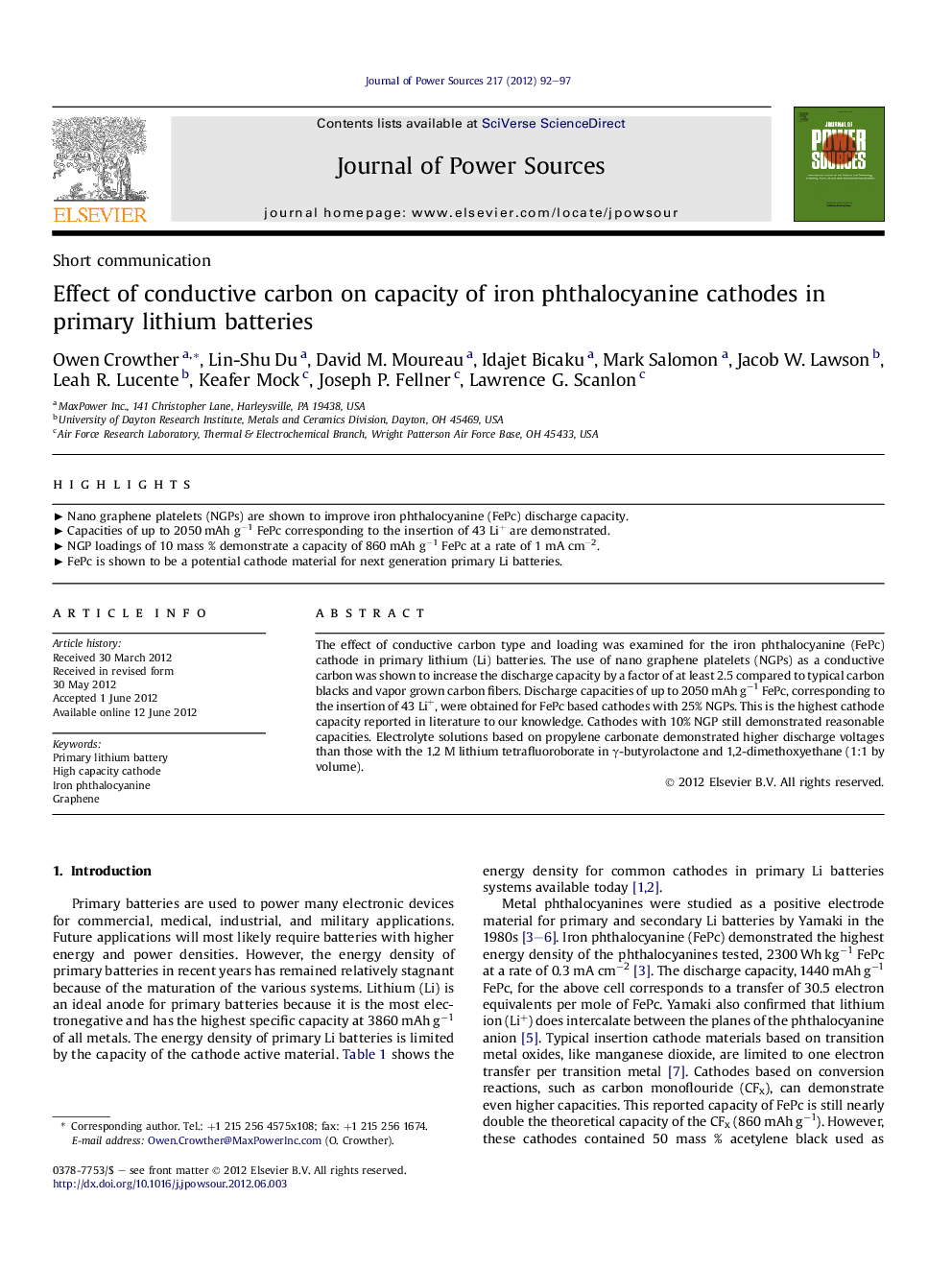| Article ID | Journal | Published Year | Pages | File Type |
|---|---|---|---|---|
| 1284415 | Journal of Power Sources | 2012 | 6 Pages |
The effect of conductive carbon type and loading was examined for the iron phthalocyanine (FePc) cathode in primary lithium (Li) batteries. The use of nano graphene platelets (NGPs) as a conductive carbon was shown to increase the discharge capacity by a factor of at least 2.5 compared to typical carbon blacks and vapor grown carbon fibers. Discharge capacities of up to 2050 mAh g−1 FePc, corresponding to the insertion of 43 Li+, were obtained for FePc based cathodes with 25% NGPs. This is the highest cathode capacity reported in literature to our knowledge. Cathodes with 10% NGP still demonstrated reasonable capacities. Electrolyte solutions based on propylene carbonate demonstrated higher discharge voltages than those with the 1.2 M lithium tetrafluoroborate in γ-butyrolactone and 1,2-dimethoxyethane (1:1 by volume).
► Nano graphene platelets (NGPs) are shown to improve iron phthalocyanine (FePc) discharge capacity. ► Capacities of up to 2050 mAh g−1 FePc corresponding to the insertion of 43 Li+ are demonstrated. ► NGP loadings of 10 mass % demonstrate a capacity of 860 mAh g−1 FePc at a rate of 1 mA cm−2. ► FePc is shown to be a potential cathode material for next generation primary Li batteries.
